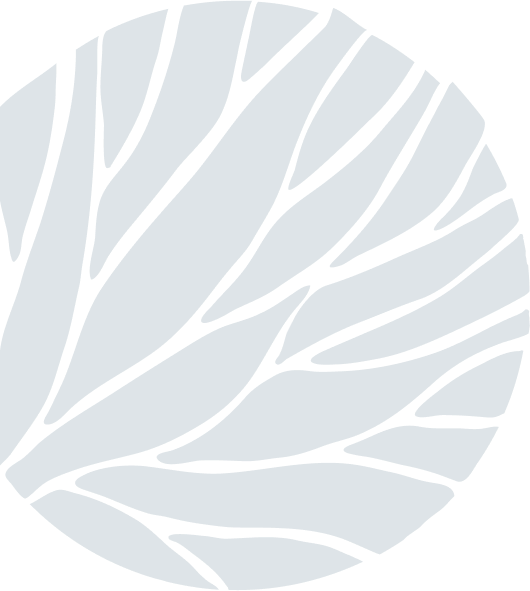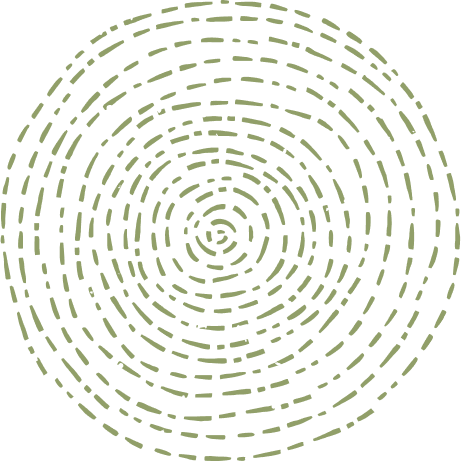Africa’s Gentle Giants
on Aug 01, 2023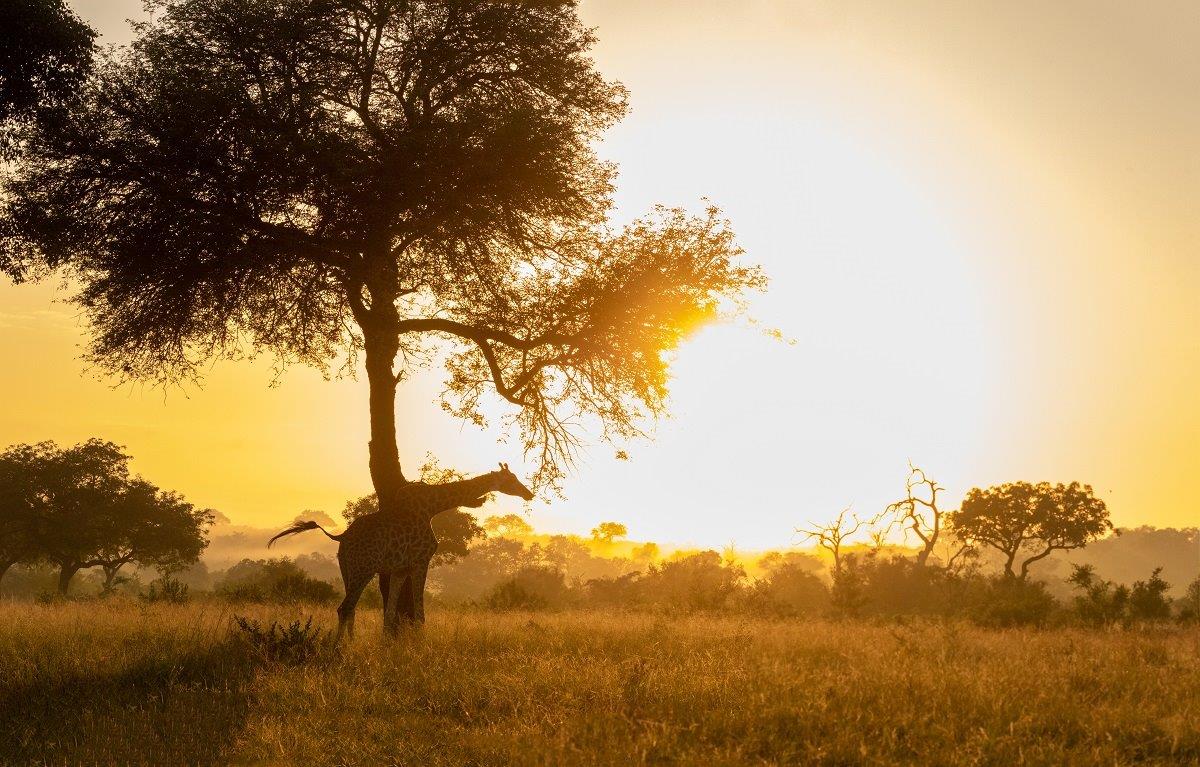
Known as Africa’s gentle giant, with bulls reaching up to 5,5m tall and weighing in at up to 1,4 tons, the giraffe is the world’s largest ruminant and the world’s tallest mammal. Today there are over 6000 giraffes in the Kruger National Park, but their situation was critical in 1902 when James Stevenson Hamilton was appointed Warden of the Sabi Nature Reserve. No more than 15 giraffes survived south of the Oliphants River. Before 1902 giraffe were hunted for their hides which were used as a whip on wagons, meat was eaten, and bones were used for manure.
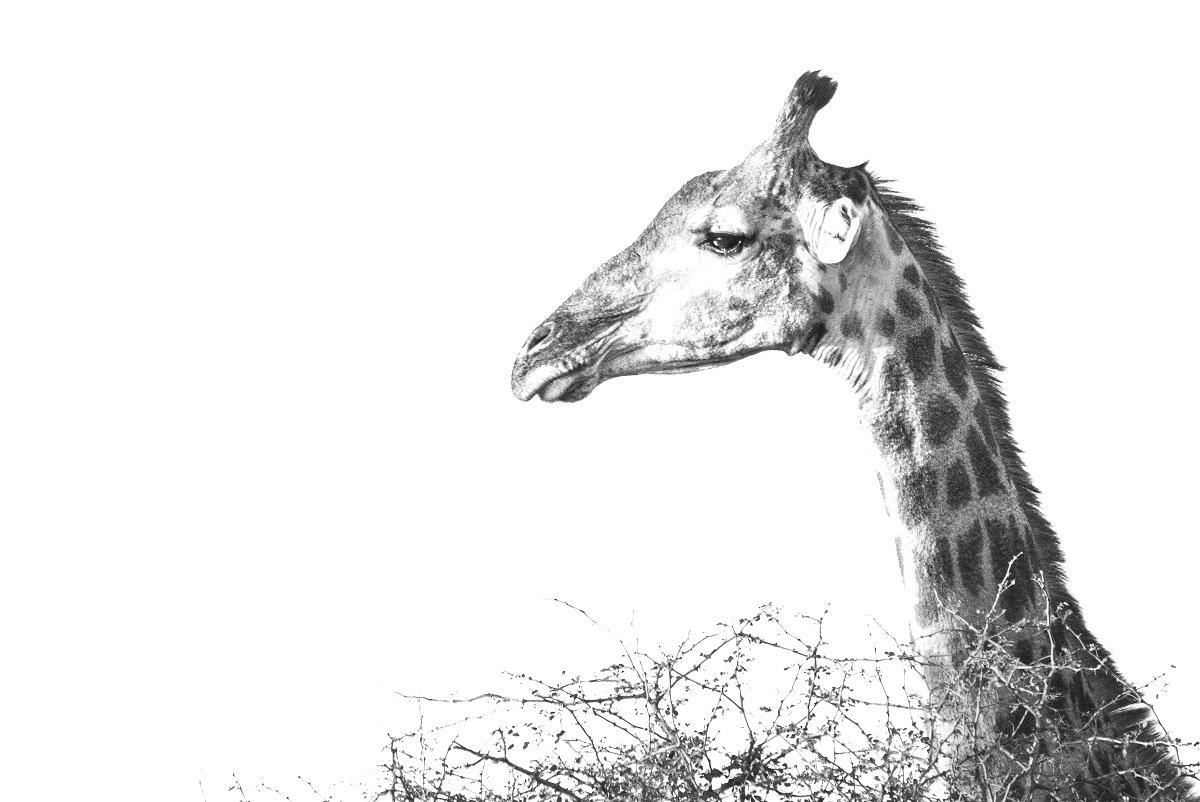
The giraffe has an unusually long neck, long legs, and a relatively small body. Their unique evolutionary design has required some profound adaptations. The giraffe evolved to be as tall as possible to reach leaves higher than the other competition. Giraffes don’t just eat any leaves; they are very selective feeders and prefer leaves from the Vachellia and Senegalia tress (previously known as Acacia). Males and females are of different height. Males generally feed higher and extend higher than females who bend slightly and thus do not compete. The giraffe’s head is shaped narrow at the snout and larger at the back which allows them to get deep into the Acacias they love feeding on.

Their prehensile tongue is an incredible adaptation that allows them to pluck their favourite leaves from the trees that use thorns as a defence. The tongue is about 50cm long and along with the lower teeth and the pallet, they pluck leaves from the selected trees. The tongue is black and contains melanin which is thought to protect it from the sun. Blood flow is restricted to the tongue in case it is pricked from the thorns protecting its favourite trees which also contributes to the dark colour. The lower jaw has 6 molars, 6 premolars, 2 canines and 6 incisors. The upper jaw has 6 molars, 6 premolars and a dental pad, which is used together with the lower incisors and canines when browsing.
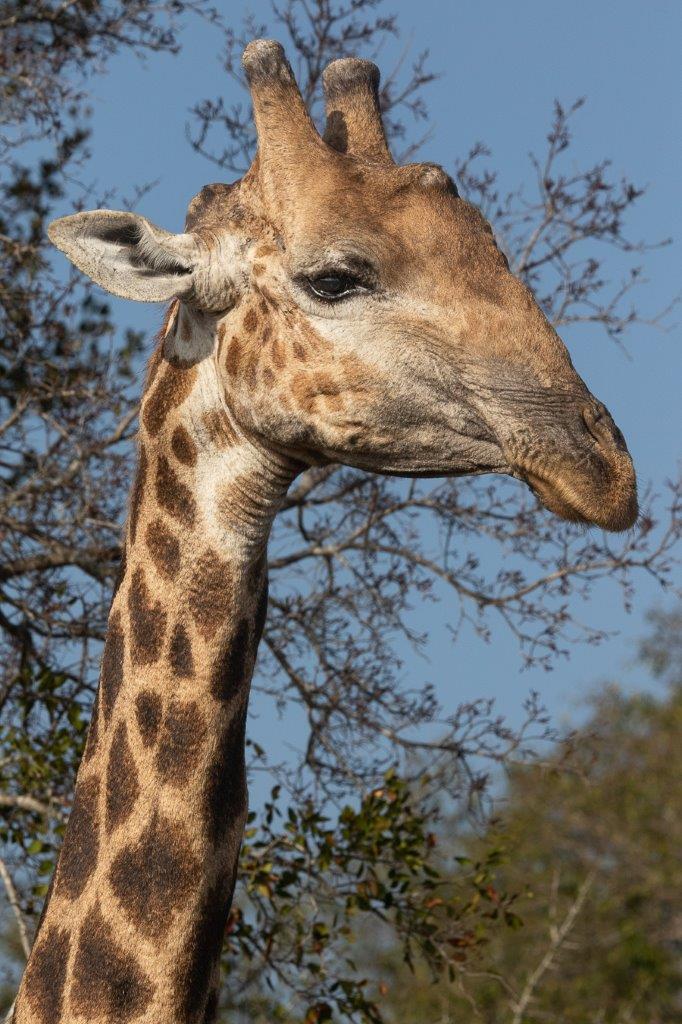
Ossicones are horn-like projections found on the heads of giraffes. They are derived from ossified cartilage and are not bone. At birth, the ossicones lie flat and are not attached to the skull. Over time they ossify and attach to the skull. Ossicones are covered by skin and fur as opposed to horns which are covered by keratin.
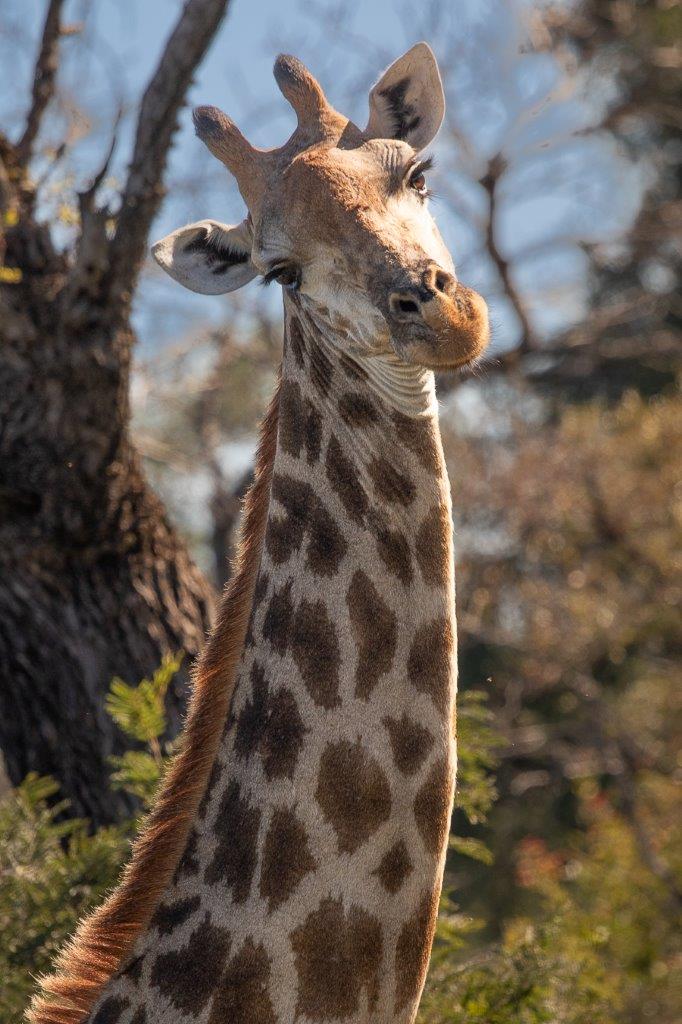
We all know that giraffes are the tallest of all the animals out here, but did you know that giraffes’ eyes are even bigger than those of elephants, rhinos and hippos? Ostriches aren’t the only land animals on safari that have large eyes. Giraffes have excellent vision in almost all directions, which they use to their advantage to keep safe by constantly scanning the landscape for threats such as lions. They can spot predators up to 1km away. Other animals such as zebra and impala are often seen with giraffes for this reason.
Giraffes have the same number of vertebrae in their necks (seven) as most mammals. The bones are just much longer and larger. The last join in the vertebra between the base of the head and the neck (the axis/atlas joint) is extremely flexible, allowing giraffe to put their heads at an almost vertical angle from the neck. This is unusual in mammals (try to look straight up and see how limited our movement is). It allows giraffes to reach the tallest of branches that not even elephants can reach, enabling exclusive access to a precious resource – fresh leaf shoots and flowers.
The neck is not only long to reach leaves, but it also comes with other benefits. Male giraffe use their necks in combat called necking and the additional height also gives them a great vantage point to spot predators.
When they do sleep, the giraffe will sit down, mostly with the head and neck up and doze for a few minutes at a time. Every now and then, for a few minutes, they may curl the neck around and place the head on the rump. This will normally be in a large open clearing or on a crest, where they feel safer and have the time to stand up and run away before anything sneaks up on them. A large portion of rest will be acquired during rumination. This is the period when they regurgitate partially digested food (the cud) back into the mouth and re-chew it, swallowing it again to gather maximum nutrients and moisture – just like cows do. During rumination, the animal’s brain is alert but in a much more relaxed state than normal activity, enabling a period of rest and recovery. Giraffes sleep for less than two hours a day in short intervals compared to their main predator – lions – who can sleep for 18-20 hours per day! A rather unfair playing field…
Seeing a giraffe lower its neck to drink makes you wonder why blood rushing down to the head does not cause it to black out or bring fatal haemorrhaging. To withstand a surge of blood when its head is raised, lowered, or swung rapidly, the giraffe evolved control valves in its jugular and unusually elastic blood vessels at the base of the head known as rete mirabile carotorcium, that acts as a pressure regulation buffer and helps keep the pressure constant in the brain.
Their unique evolutionary design has required profound adaptations to the giraffe’s circulatory system. A neck of unusual length requires specialised equipment to pump blood over two metres uphill to the brain. To do that it was once thought the giraffe have a very big heart, but research has shown that the body cavity lacks sufficient room for that option. Instead, it has a relatively small heart, with power coming from a very strong beat, up to 170bpm, double that of a human, while pumping the highest known blood pressure of any mammal, again double that of a human. This is possible because the left ventricle has an incredibly thick wall and a small radius. The walls are up to 4cm thick. The right is only 1cm thick and pumps only a short distance to the lungs, whereas the left ventricle pumps all the way up the neck to the head against hydrostatic pressure of the blood already in the long vertical artery.
It is also incredible that blood does not pool up in the legs, nor does a cut in the legs bleed profusely even though arteries near the feet are under great pressure because of the weight of fluid pressing down on them. In other animals, such pressure would force the blood out through the capillary walls. In giraffes, however, these blood vessels are thick-walled and less elastic, with very tight sheath of thick skin around the lower leg.
Giraffes have the thickest skin of all land mammals due to the high blood pressure maintained within a giraffe’s body, the skin has developed to be exceedingly thick. The skin acts almost like a compression suit to prevent the pooling of blood due to such high pressure. Imagine how quickly a giraffe would bleed out from a tiny scratch if the skin was not thick?! The capillaries are thick-walled and inelastic to avoid this. Furthermore, the skin is about 16mm thick, which is more than double the thickness of elephant or hippo skin. Hard to believe!
While the giraffe’s patterns on their skin are beautiful and unique, they do serve a purpose. They are great for camouflage but more importantly, help the giraffe in controlling body temperature in Africa’s hot conditions. Under each patch is a sophisticated blood system and around each patch is a blood vessel. When giraffes need to lose heat, they send blood through these vessels into these patches and release heat to the environment. With a long neck, it increases skin area which allows them to keep cool.
These are just a few of the unique adaptations giraffes have developed over 1000s of years to survive the harsh African wilderness. They have done their part and all they require of us is that we conserve wilderness area for them to roam free as gentle giants.
Blog by Jason Street (Bush Lodge Ranger)






